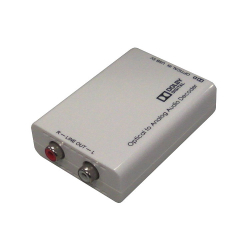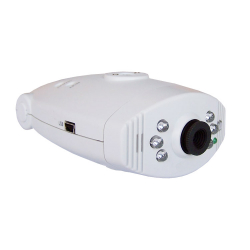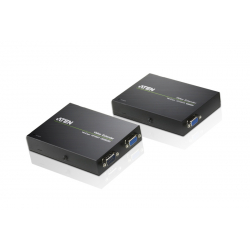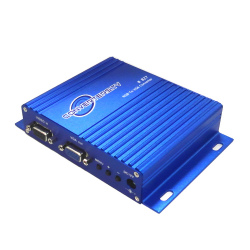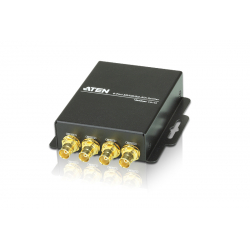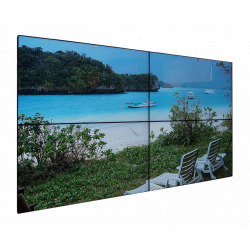A B C D E F G H I J K L M N O P Q R S T U V W X Y Z _
| DTV | Digital television (DTV) is the sending and receiving of moving images and sound by discrete (digital) signals, in contrast to the analog signals used by analog TV. Digital television supports many different picture formats defined by the combination of size, aspect ratio and interlacing. There are a number of different ways to receive digital television. One of the oldest means of receiving DTV is using an antenna/aerial. This way is known as Digital Terrestrial Television (DTT). With DTT, viewers are limited to whatever channels the antenna picks up. Signal quality will also vary. Other ways have been devised to receive digital television, including digital cable and digital satellite. Digital television broadcast standards include the DVB family used throughout Europe including DVB-S (satellite), DVB-T (terrestrial), and DVB-C (cable); the ATSC family used throughout North America including ATSC (terrestrial/cable) and ATSC-M/H (mobile/handheld); and the ISDB family used throughout Japan and South America including ISDB-S (satellite), ISDB-T (terrestrial) and ISDB-C (cable). |
| DVD | DVD (Digital Versatile Disc) is an optical disc storage media format. Its main uses are video and data storage. DVDs are of the same dimensions as compact discs (CDs), but store more than six times as much data. Variations of the term DVD often indicate the way data is stored on the discs: DVD-ROM (read only memory) has data that can only be read and not written; DVD-R and DVD+R (recordable) can record data only once, and then function as a DVD-ROM; DVD-RW (re-writable), DVD+RW, and DVD-RAM (random access memory) can all record and erase data multiple times. |
| DVD Region Code | A DRM (Digital Rights Management) technique designed to allow motion picture studios to control aspects of a release, including content, release date, and price, according to the region. DVD video discs may be encoded with a region code restricting the area of the world in which they can be played. The commercial DVD player specification requires that a player to be sold in a given place not play discs encoded for a different region, however region-free DVD players are also commercially available. |
| DVI | Digital Visual Interface (DVI) is a is a video interface standard designed to provide very high visual quality on digital display devices such as flat panel LCD computer displays and digital projectors. It was developed by an industry consortium to replace the "legacy analog technology" VGA connector standard. It is designed for carrying uncompressed digital video data to a display. It is partially compatible with the High-Definition Multimedia Interface (HDMI) standard in digital mode (DVI-D), and VGA in analog mode (DVI-A). A DVI-I connector transfers digital and analog VGA type signals on additional pins. |
| EDID | The Extended Display Identification Data (EDID) is a data-structure, provided by a display monitor, to describe its capabilities to a graphics card connected to it. It is what enables a modern personal computer to know what kind of monitor is connected. The EDID includes the manufacturer's name, the product type, the timing data supported by the display, the display size, luminance data and (for digital displays only) pixel mapping and other data. |
| EGA | The IBM PC computer display standard specification located between CGA and VGA in terms of colour and space resolution. EGA (Enhanced Graphics Adapter) produces a display of 16 simultaneous colours from a palette of 64 at a resolution of up to 640×350 pixels. The EGA standard was made obsolete by the introduction of VGA and later higher resolutions. |
| Equalization | Equalization, or EQ for short, means boosting or reducing (attenuating) the levels of different frequencies in a signal. The term generally implies Amplitude equalization, but any frequency dependent response characteristic could be equalized. Audio equalization for example breaks down the audio spectrum into several frequency bands to compensate for changes in audio frequency-dependent levels, allowing the user to control (boost or cut) each frequency segment individually. |
| FCC | Federal Communications Commission. The U.S telecommunications regulator, an Independent agency of the American Government which regulates all non-federal government use of the radio spectrum (including radio and television broadcasting), all interstate telecommunications (wire, satellite and cable), as well as all international communications that originate or terminate in the United States. |
| Fiber Optics | Refers to the medium and the technology associated with the transmission of information as light pulses along a glass or plastic wire or fiber. Optical fiber carries much more information than conventional copper wire and is in general not subject to electromagnetic interference and the need to retransmit signals. The signal loss in a fiber optics system is usually smaller than in coaxial cables, and so optic fibers are often used to carry signals over extremely long distances. |

